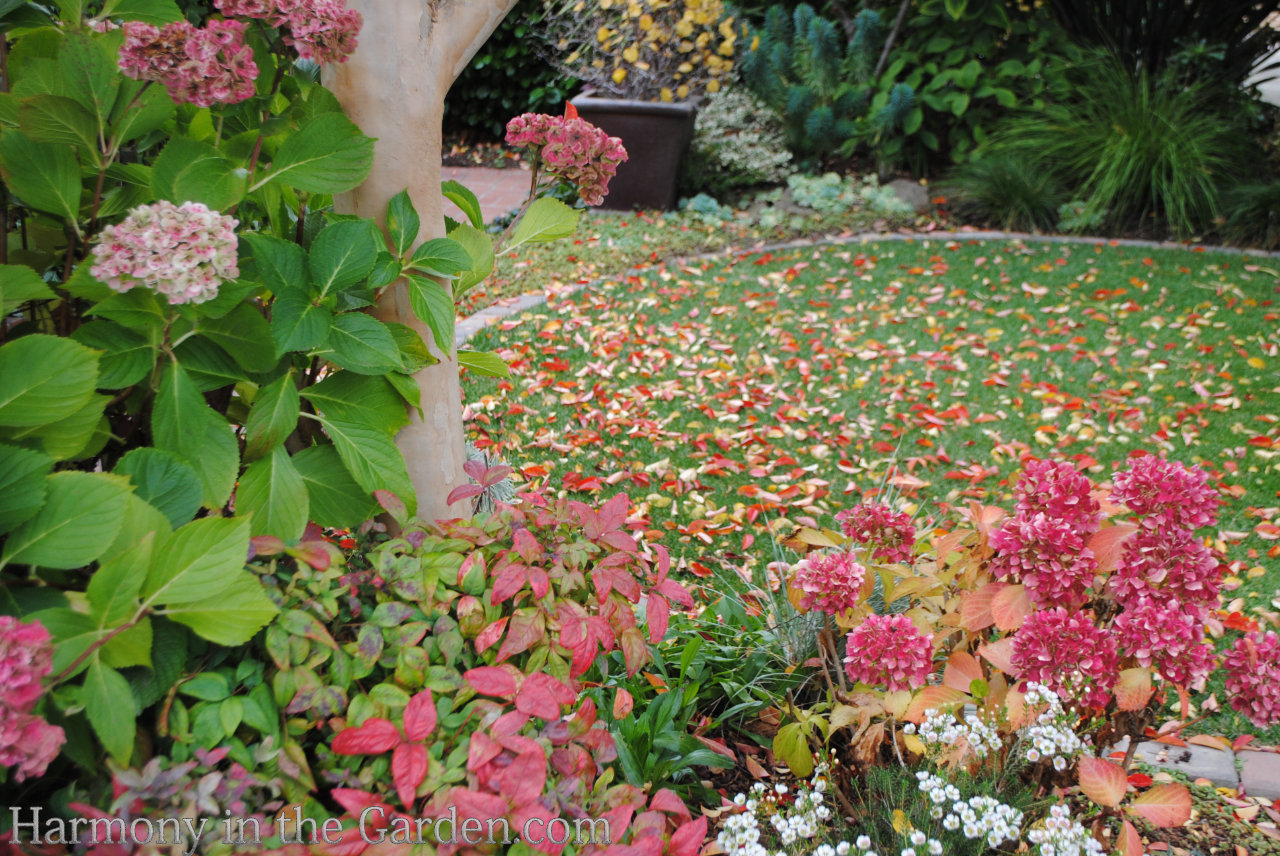
It’s a new year and with it comes the oh-so-familiar new year’s resolutions. And while I rarely keep the ones I make, this is a resolution that’s long overdue and one that I’m thrilled to undertake: getting rid of my unused front lawn.
With California’s lowest recorded rainfall in its history (that’s over 160 years!), the timing is perfect to practice what I preach.
Even though I remove lawns for many of my clients, I just haven’t been able to find the time to take care of my own front garden – until now.
Enough is enough!
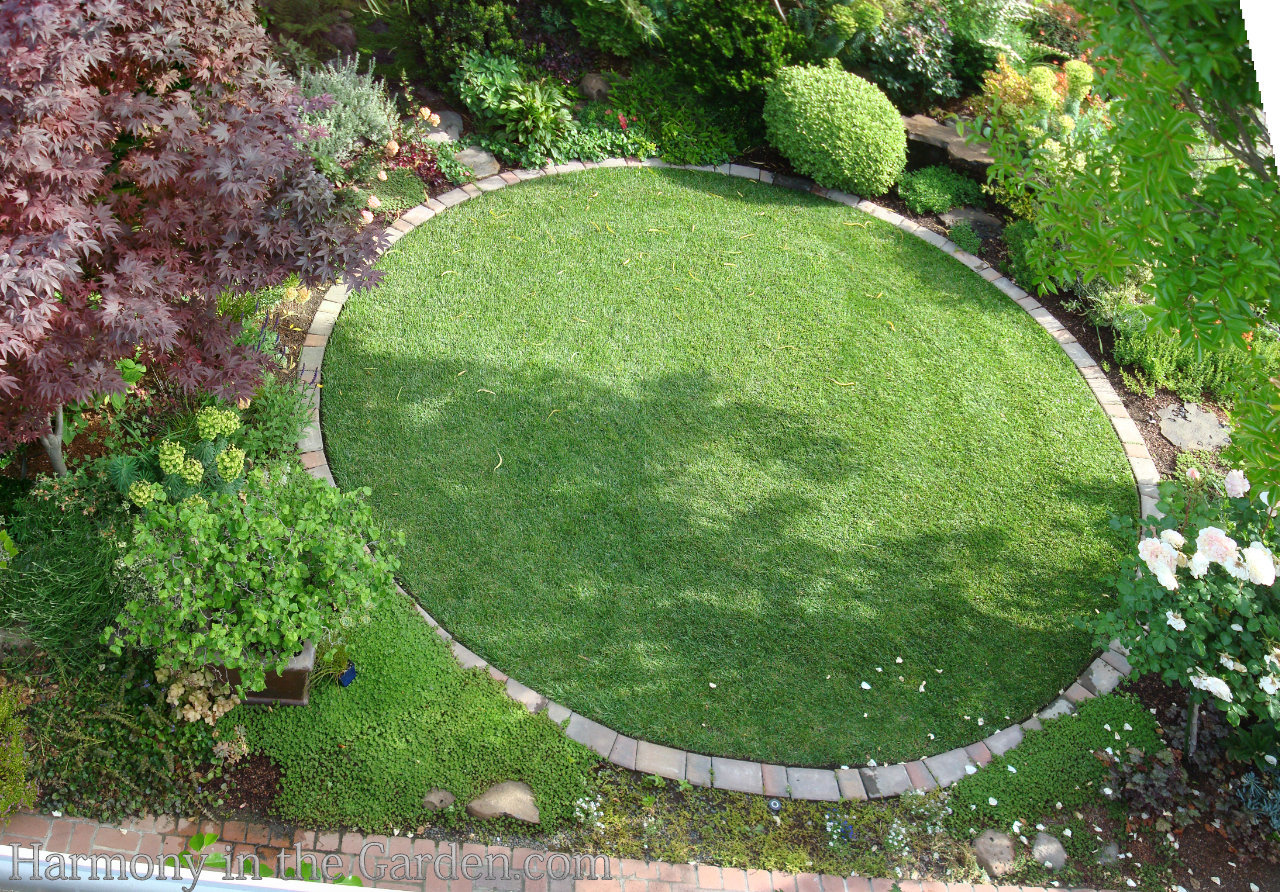
My goal with this blog post is to show how I’ll remove my lawn as well as how I’ll tie in my new garden with the existing garden beds that surround it.
To do this, I’ll break this post into three sections, with this being Part 1.
Using my book Refresh Your Garden Design with Color, Texture and Form as a guide, I’ll show how to pull out key plants in an existing garden to use as a jumping off point.
And then, how to create harmonious combinations around them.

When undertaking a large project like this, my first step is to take a few photos of the area from different angles in the garden.
One was from the roof (above, thanks to my sure-footed husband,) and the other was from the walkway.
The next step is to print out the photos and study them while inside the house, away from any distractions (mailman, chatty neighbors, etc.)
After studying the photos, I’ll then begin sketching a few different options directly on the photos, and pick my favorite!

Next, I’ll begin transferring my sketch onto the lawn to see how it looks in real life.
Rope (or sometimes, a hose) is helpful when laying out the initial shapes of garden beds or pathways. However, rope doesn’t give you crisp, clean lines, but instead gives wiggly, squiggly lines. See the third photo from the top for proof!
Here’s a useful tip: A trick I learned from my installation crew is to use long PVC pipes, held into place with short pieces of rebar pounded in the ground.
The flexibility of the pipes creates smooth and subtle curves, resulting in clear and accurate lines.
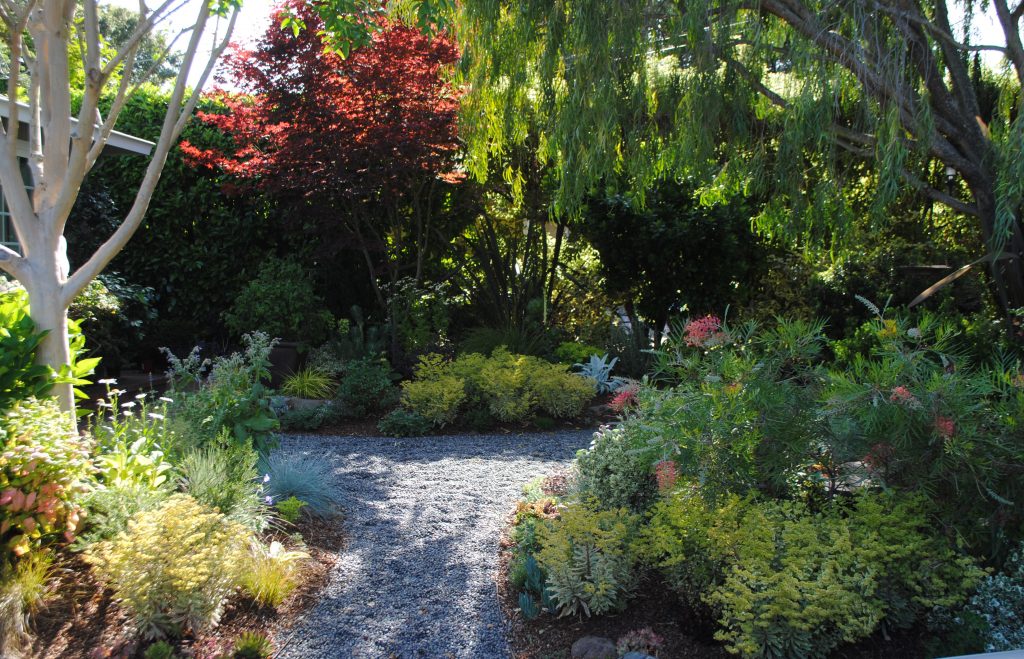
My front garden is fairly small, so I need to make sure the design and plant choices don’t make the space seem smaller than it is.
If I were to replace the lawn with a giant sea of plants, for example, the result would not only be chaotic, but would appear claustrophobic.
Therefore, the concept of negative space is critical to prevent the garden from appearing small and overwhelming. Negative space is especially important in small gardens, as it helps to make a small space appear larger than it is.

Lawns are effective for creating this negative (and calming) space. However, since I’ll be removing my lawn, I need to come up with another form of negative space.
In this instance, I’ve decided to install wide pathways that will lead to different areas of my garden.
It’s important to make paths fairly wide, as narrow paths would only emphasize the smallness of the space.
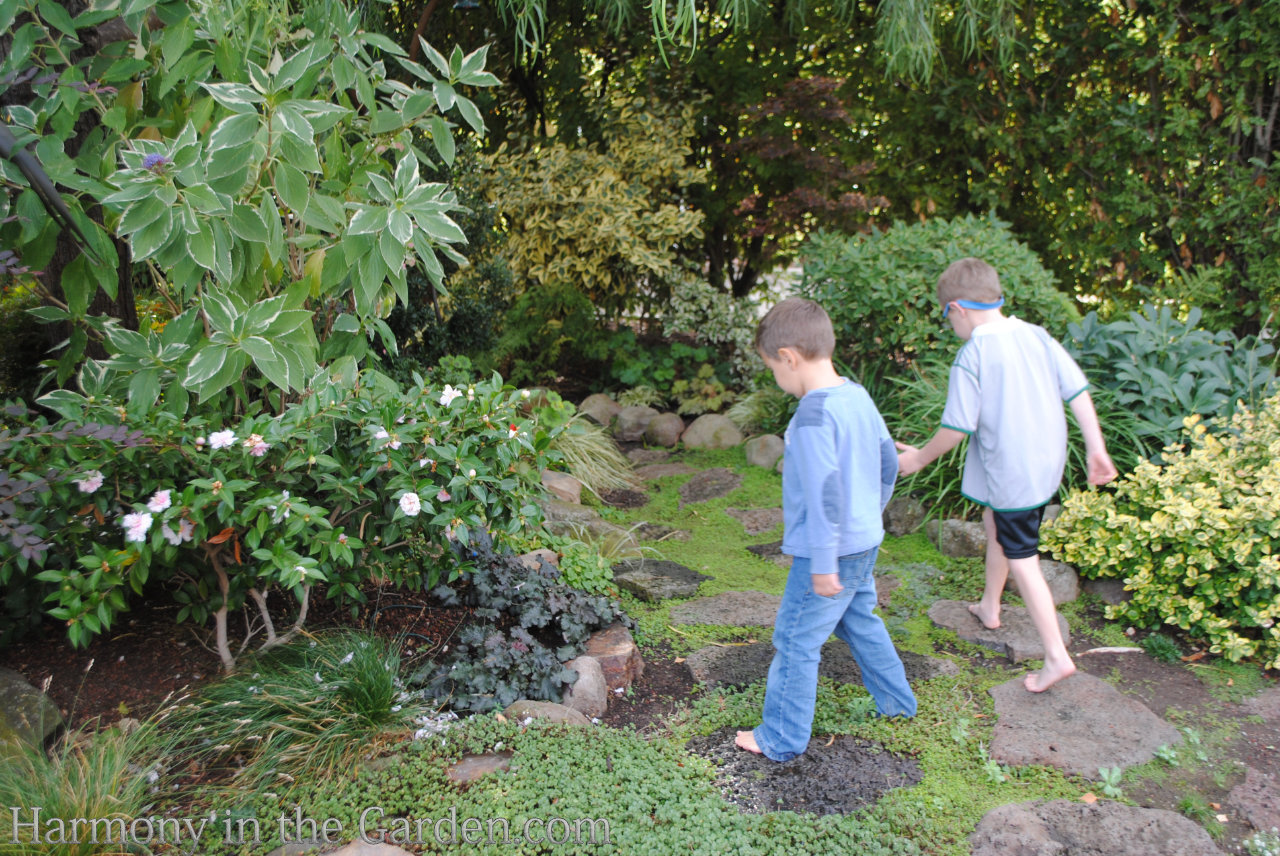
Next, comes the decision on what type of gravel to use for the pathways.
I don’t want the stones to be sharp, as the little boys who live across the street love to come over and wander barefoot through my garden.
I also need the colors to blend with two different hardscaping materials that border the area – gray pavers on my driveway, and the bricks along my home.
Pebbles with dark gray colors would blend with both.

Another tip:
When going to look at stones or gravel at a landscape supply yard, I recommend taking along a few small plastic snack bags to take samples home with you.
Once home, lay the samples out side by side so you can see how they’ll actually look in your garden.
Better yet, lay them out on a tray or if possible, a sample of nearby flagstone to get the perfect match.
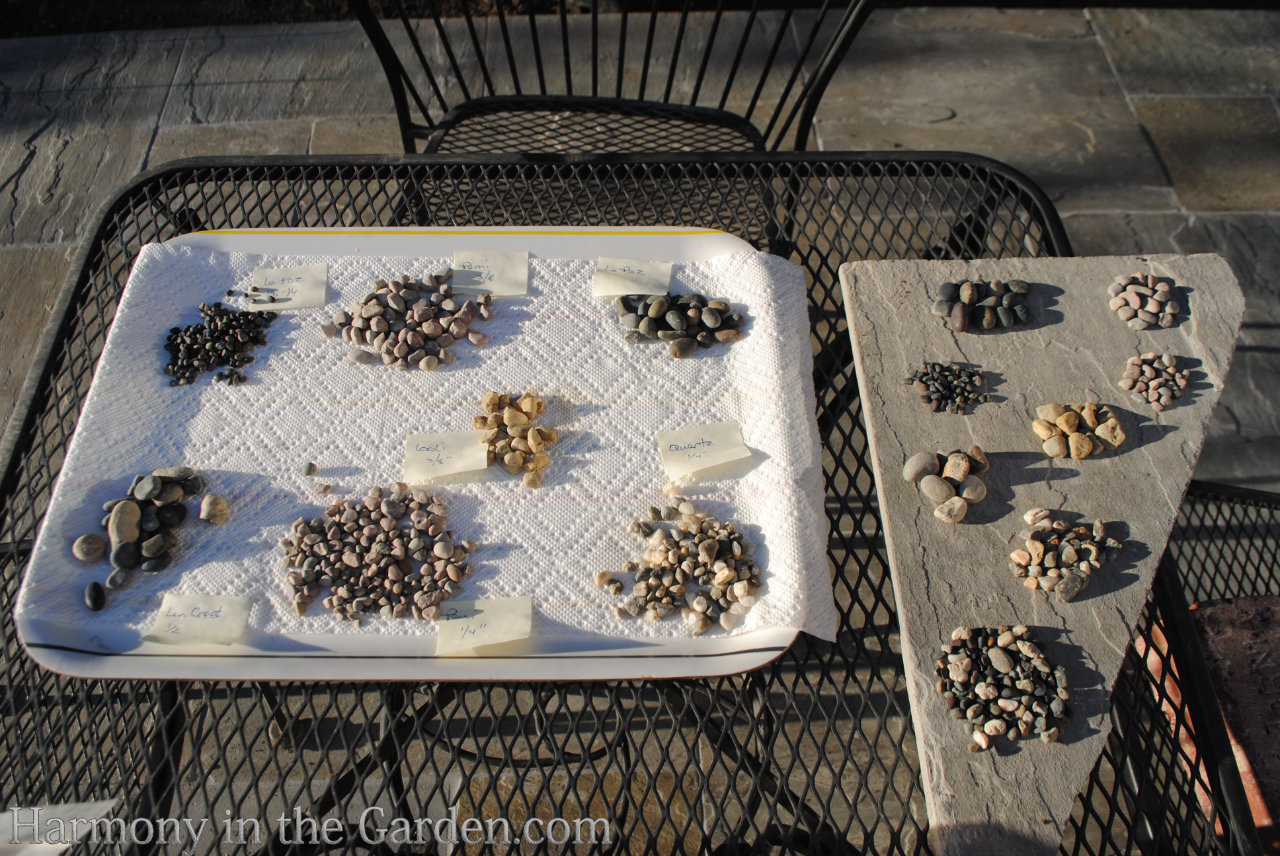
Yet, another tip!
Besides the snack bags, also take a bottle of water with you – not for you but for the rocks!
It’s dusty out there so use the water to rinse off a section of stone to get accurately view the color.
You’d be surprised at what the stone looks like once it’s cleaned up.
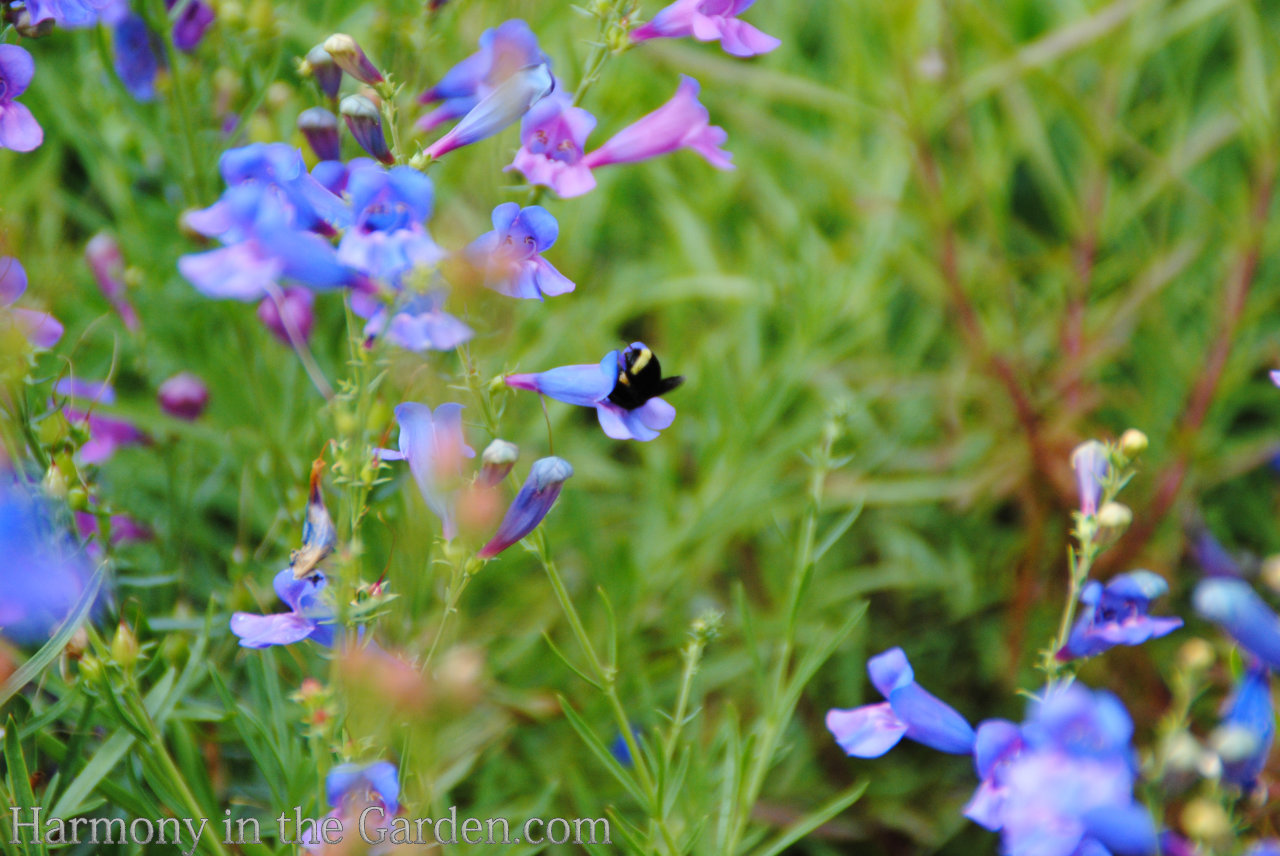
Now onto my favorite part – planting design!
Since it’s currently in the middle of winter (with pretty slim pickings at the nurseries,) I’m just gathering ideas right now.
One thing I want to do, however, is incorporate more natives (like this vibrant penstemon ‘Blue Springs’) and edibles among my other plants.
While edibles typically require a lot of water, there are some that don’t, such as rosemary and sage.
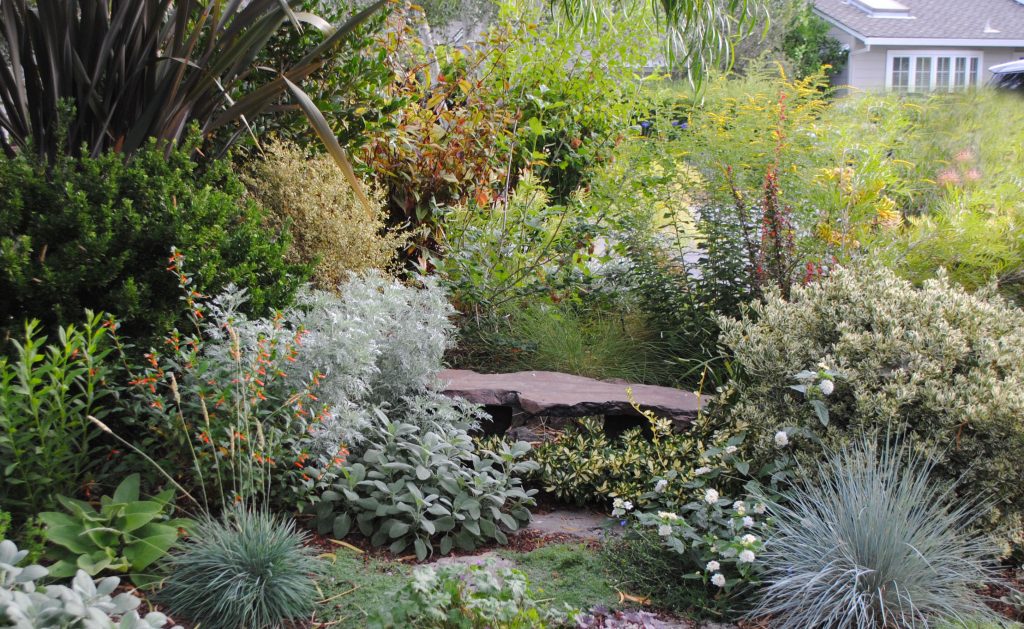
When creating a new garden bed next to existing beds, it can be tricky to harmoniously blend them together.
Often times the new garden beds look drastically different and can stick out like a sore thumb.
To avoid this, I’m choosing a few key existing plants to build around, focusing on their color, texture or form.
1. Color and Form

One of the main stars of my front garden is this towering phormium.
I love the rich dark chocolate color, the smooth, strappy foliage, and the upright form.
To echo these elements, I’ll surround it with ‘Cheryl’s Shadow’ cranesbill geranium and ‘Copper Spoons’ kalanchoe.
These plants will provide a nice contrast in shape and form, while repeating the phormium’s colors.
The upright shape of Tuscan kale would be a really nice form echo, too.
Hmmm…so many choices!

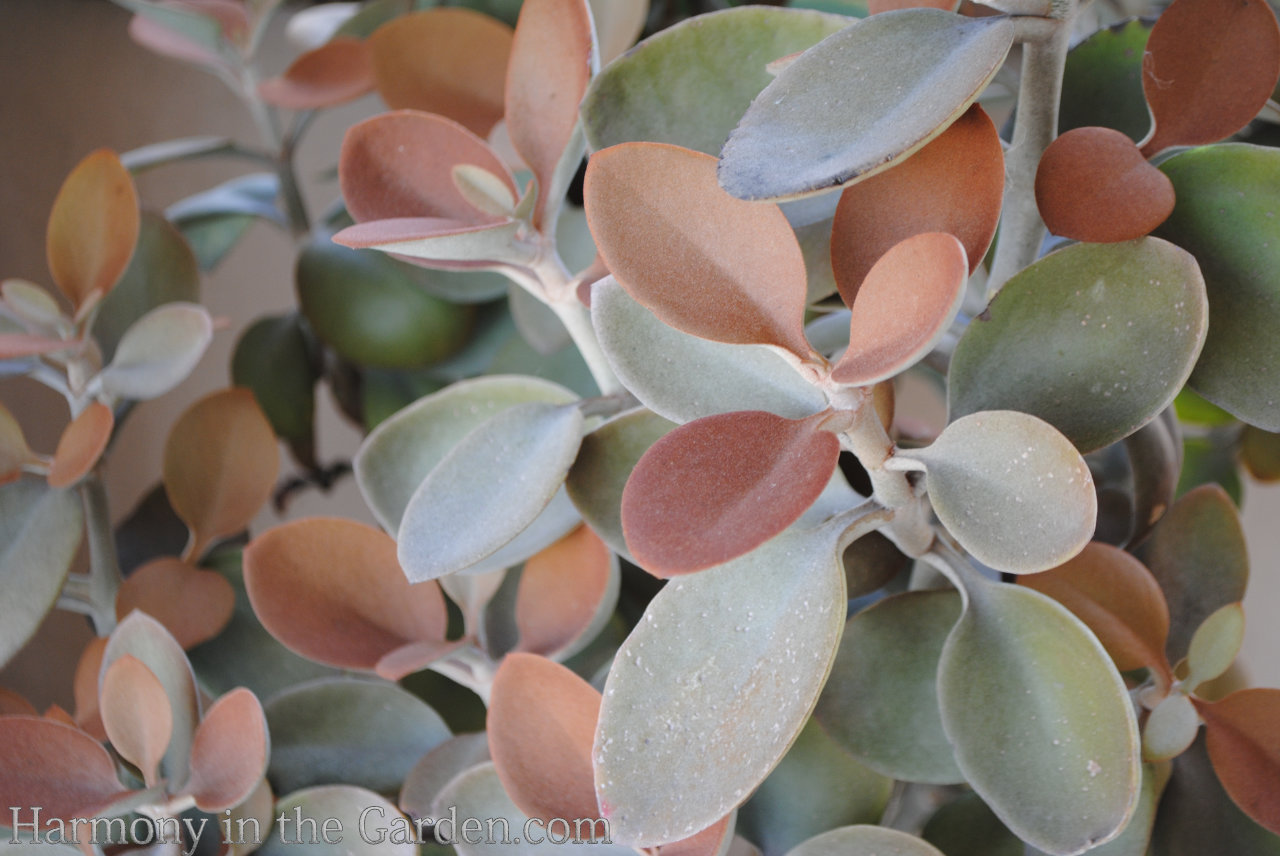
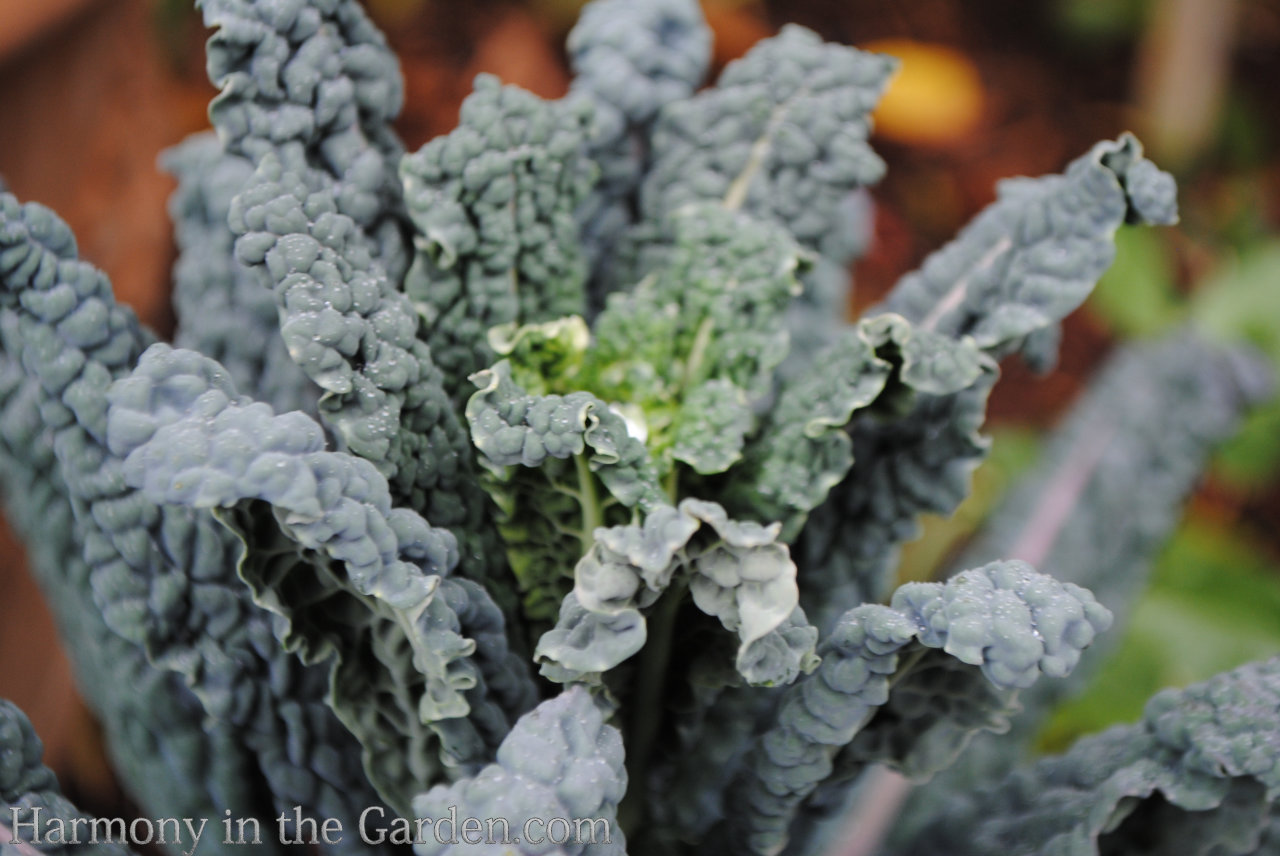
2. Texture and Form

On the other side of my garden is this beautiful and highly structural contorted hazel (Harry Lauder’s Walking Stick.)
Once its yellow fall foliage falls off, the twisting and curling branches are the star of my winter garden.
To repeat this texture and form, I’ll surround it with equally exciting plants.
I’m considering the low growing, sponge-like artemesia canescens and the Blue Grama grass ‘Blonde Ambition’, with its eyelash-like tassels.
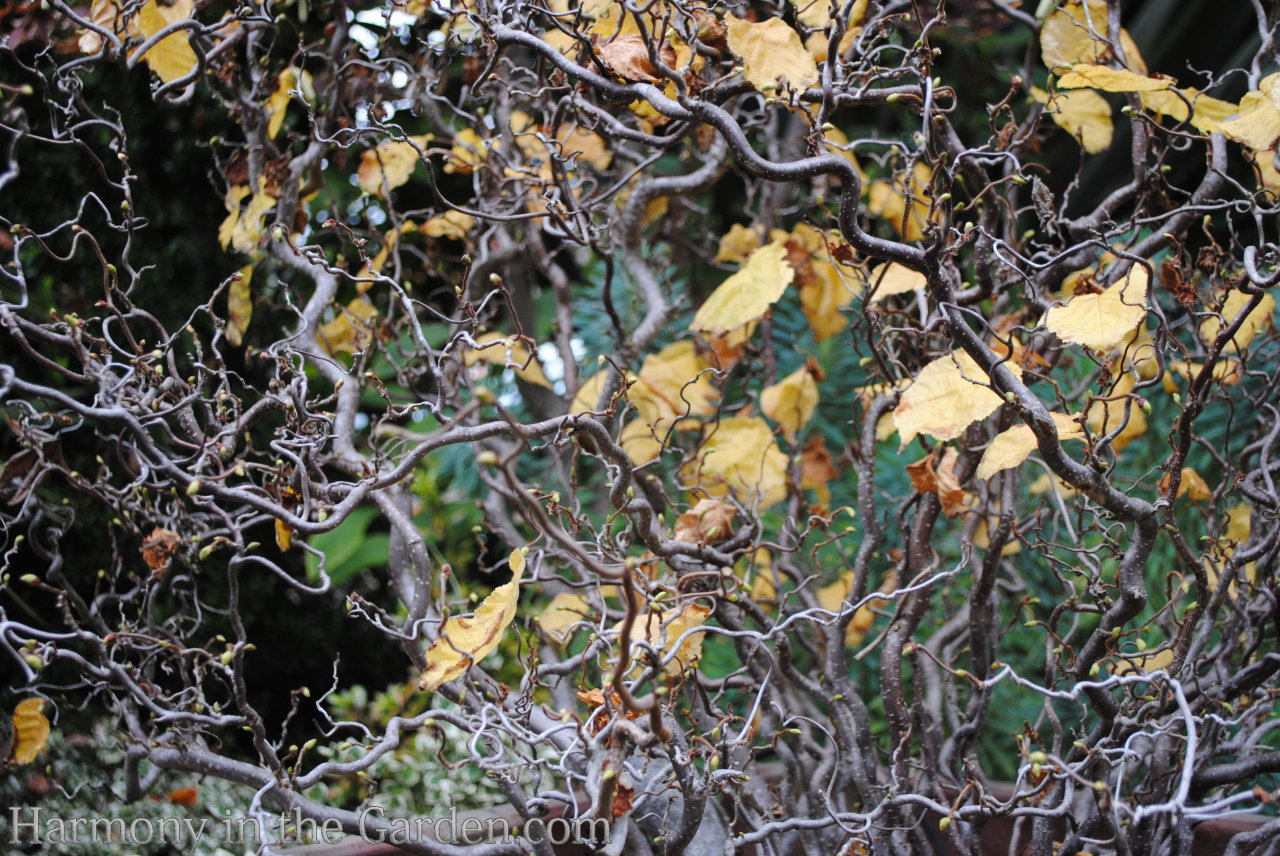
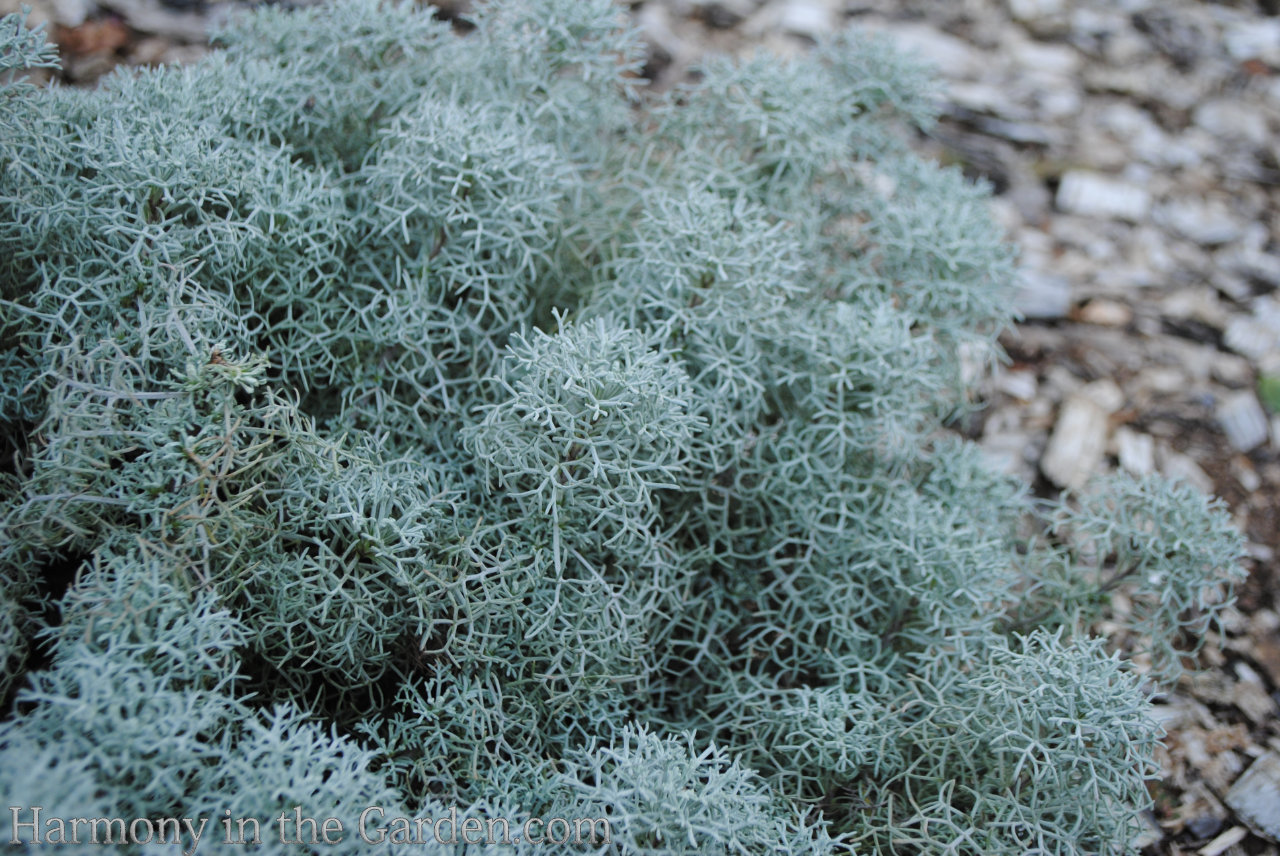
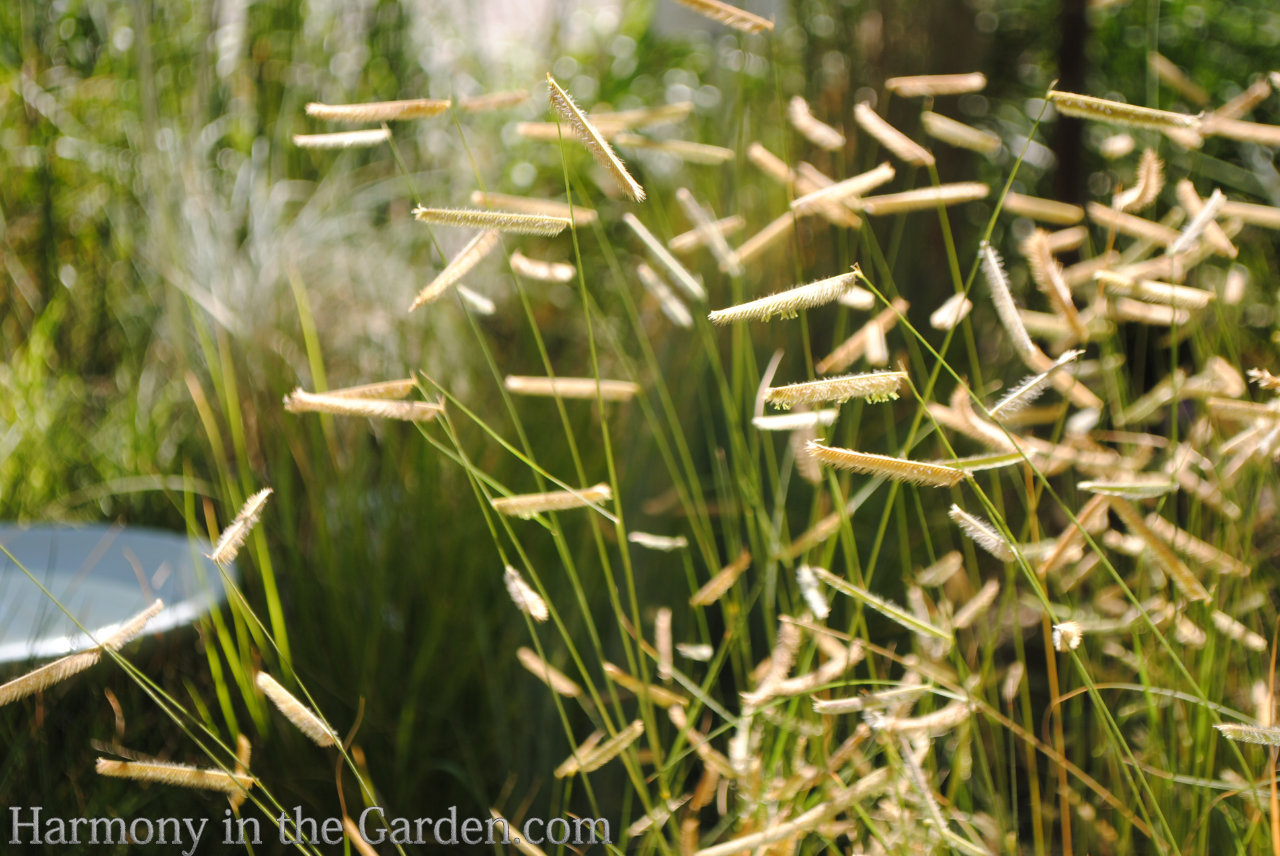
3. Year-Round Color Echoes

The largest garden bed in my front yard contains my favorite combination of fall colors.
I owe it all to the glowing foliage of the viburnum ‘Roseum’, the year-round flowers of the grevillea ‘Superb,’ and the creeping plumbago’s crimson colors.
I plan to include similar pink and red tones to last throughout the year, such as Bloody Sorrel with its deep red veins and a grevillea ‘Mt. Tamboritha’ with its year-round flowers.
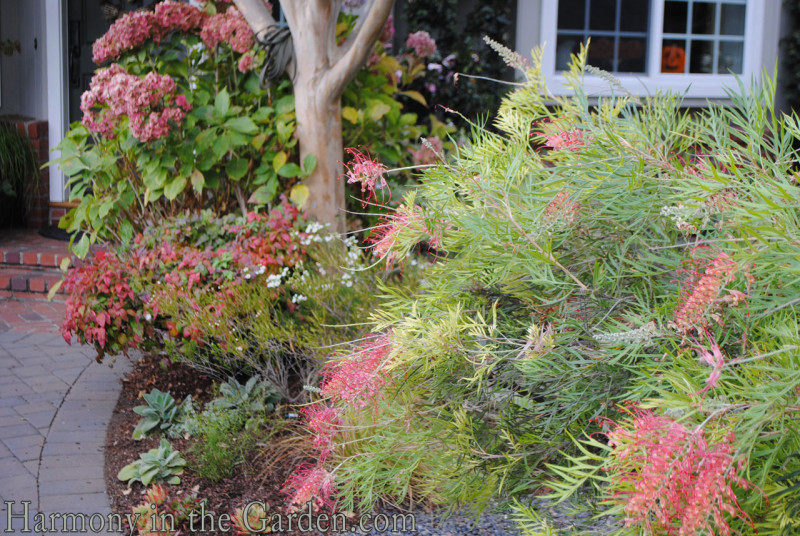

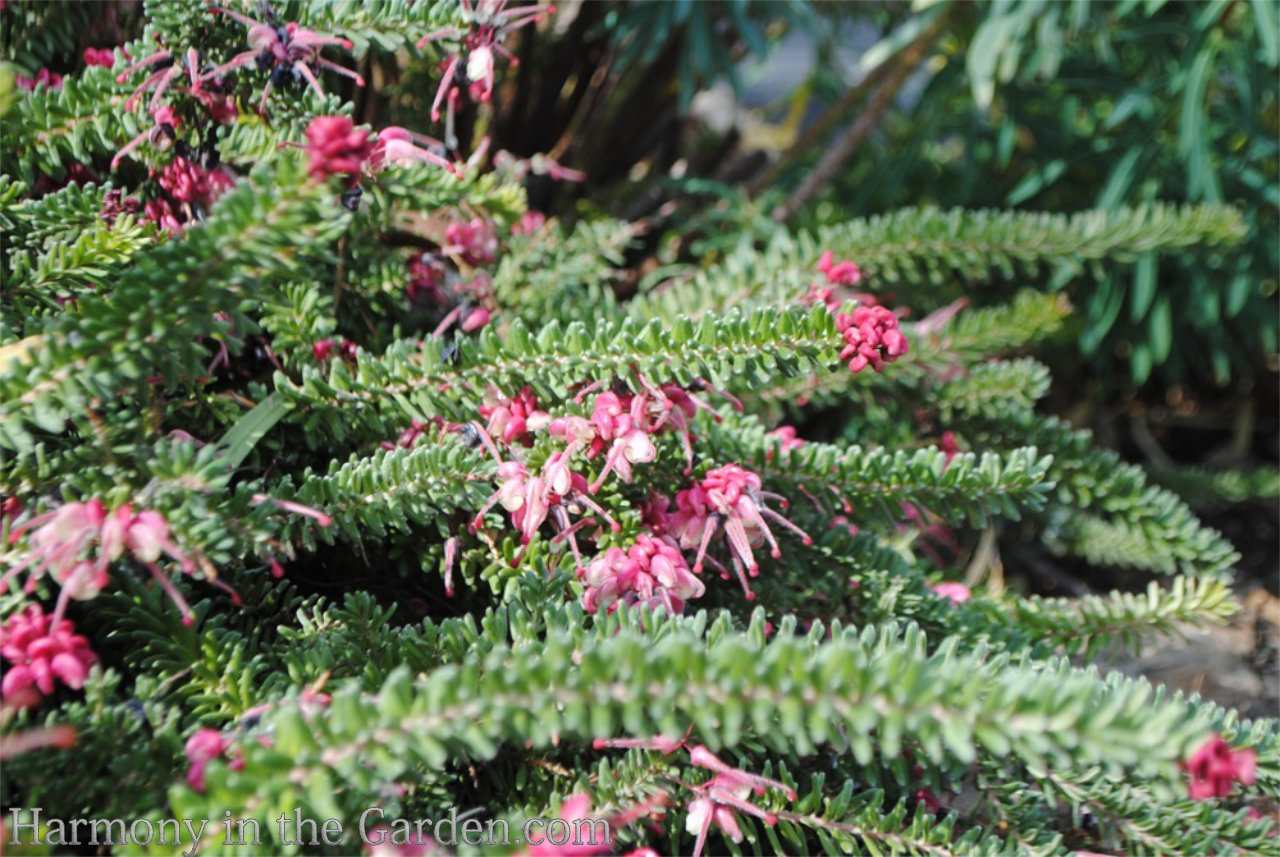

Well, there you have it! Take a look at Part 2 of this series for more details about the construction of the pathways.
I’ve got a few more really great tips to share, too!
Oh, and one more thing – I highly recommend Pam Penick’s latest book,Lawn Gone! Low-Maintenance, Sustainable, Attractive Alternatives for Your Yard for more information about removing lawns (ie: pros and cons for various ways of removing lawn, lawn alternatives, and inspirational photos (spoiler: one of my gardens, left, is featured in this book!)






43 Comments
I just seeing your artistic and helpful process! Your circle was lovely but I can’t wait to see how you complete the magic on the new look.
Thanks, Linda. After a back-breaking day of shoveling a thick layer of top soil everywhere, moving rock retaining walls and digging up poorly placed plants I can’t wait to see the new look as well! Though it’ll have to wait a bit until I can walk again…
Fantastic article. We are just starting to plan our areas where we let our lawns die….should be a busy Spring! Might as well work with the “heat wave” up here in Auburn, CA. Always look forward to your articles!!
Hi Rosemary – yes, it’ll be a busy season indeed. My husband and son are outside as I type this, helping to move soil around, reconfiguring irrigation, etc. It’s a ton of work but it’ll be worth it in the end. Plus, you’ll be happy once you start seeing lower water bills, too! Good luck with your project!
Great article, Rebecca! I put a great focus on lawn replacement in my design business. I created a Powerpoint presentation that I show to Master Gardener training groups and garden clubs called “Water-wise Lawn Replacement: how to lose your lawn and live happily ever after!” I usually use ground-cover plants to preserve what is usually a low open space surrounded by taller borders, but am looking forward to seeing your area develop. I just installed (in the middle of the December freeze!) a large garden makeover that includes 3 ground-covers – Fragaria vesca ‘Aulon,’ Lessingia filaginifolia ‘Silver Carpet,’ and Dymondia margaretae. I’ll send a photo separately.
Hi Claudia! I’m so glad to see such a large part of your design business is lawn replacement,also. I haven’t used the Lessingia much but after a little research it seems like a great weed smothering, low growing, drought tolerant alternative to lawn. Thanks for the tip!
May I ask why you chose to lay the paths as you are doing as opposed putting a circular bed in the middle?
Deirdre – I think it’s mainly a person preference. However, I was afraid if I planted a circular bed in the middle (knowing full well that I’d end up planting taller plants than I visualize!) it would end up making the small space feel even smaller. By keeping the pathways wider and meandering, while extending the existing planting beds out a bit more (and using lower growing plants) it’ll help to keep an open feeling.
What a wonderful plan for that lovely space. Those paths with their arching form will look perfect there. I loved that chocolate-colored phormium in your garden when we visited on the fling – I so wish we could grow them here. I’m so impressed with the level of detail you are putting into your own garden design – it’s so easy to give your own garden short-shrift when you design for others. Can’t wait to see the next installment.
Thanks so much for the vote of confidence, Diana! And you’re so right about our own gardens getting short shrift. In fact, before I started this project I was taking a good hard look at my garden and was a bit horrified at some of the areas and couldn’t believe I showed it to everyone on the Fling! Oh well – isn’t that always the case with our gardens? 😉
Beautiful design and concepts, as always. Any recommendations for professional help for a drought-tolerant garden in southern California — or do you design remotely? I am a garden writer/Master Gardener/plant lover who is design challenged. I can recognize both the good and the bad, but I can’t put it together myself (I know your new book would help, but I don’t have the time – or that kind of talent). Also, one thing you might want to mention is that low-water gardens can be a lot more work than people think. Grass comes back, shrubs get too tall and ratty, It’s not a do-it-and-forget-it project.
I always enjoy your work and look forward to hearing more about your plant selections.
Thanks so much, Jennifer! I don’t have someone specific to recommend since I’m pretty far up north and unfamiliar with designers in that area, but an excellent resource is the APLD website (www.apld.org) There’s a spot on the front page where you can enter your zip code to find a designer who lives in your area. You can then check out their website and portfolio to hopefully find the perfect match!
I love your ideas and can’t wait to see what you do. I am hoping that we can transform part or all of our lawn this year because of the water situation. Thank you for showing us your thought process in action. Looking forward to part 2.
Thanks Candy – Good for you for seeing what’s right around the corner! I started small,by reducing my front lawn from the wall-to-wall carpeting that it was about 10 years ago to the circle its been since. Now it’s all gone. Just reducing a little will really help and give you the confidence to do a little bit more and a little bit more. 😉
What a fun adventure to finally get to do this in your own garden! With a huge heatwave covering most of southern Australia and often now many weeks between rains, there are many here who should also take your advice. Nice to see you considering some OZ natives in your mix – Mt Tamboritha grevillea is a great plant and no doubt well-suited to your area.
Thanks Catherine – yes, it’s so fun to experience the thrill of a blank slate from the other side of things. I find myself waking up in the middle of the night excited to think about what plants I might use. Grevilleas are a must – I just ordered a ‘Ned Kelly’ today (one of my favorites out here).
I love your work, Rebecca! And I love Grevilleas! I have been looking for a Grevillea Ned Kelly! May I ask from where/whom did you order it?
Thanks!
Thanks, Jeanine! I found my ‘Ned Kelly’ through Capitol Wholesale (they’re who I primarily use for my installations – down in San Jose – great family run business that’s been around for eons). Ask for Robert – he’ll help you out.
Add me to your visitor list when you’re up here. Rebecca i can’t wait to see your final front yard. You have such great ideas. Looking forward to seeing you at the Flower & Garden Show.
Most definitely, Gigi! Looking forward to seeing you – I just wish I was there long enough to see your new garden!
Wow Rebecca your timing is perfect. I’m reading your book and trying to figure out how to replace our lawn and up pops your post! Our lawn is ,unfortunately, Bermuda grass so I’m worried it will never completely die…planning to try clear plastic over it all this summer…any suggestions?
Hi Donna – wow, the timing is perfect isn’t it! My lawn was about 75% weeds so I had the same concern. While covering it with plastic over the summer should do the trick I didn’t want to wait that long. We dug down about 12″ and overturned the soil, removing every speck of root and then laid down fabric cloth underneath the pathway (both so the pebbles don’t disappear into the soil over time and to prevent the grass from coming up there). In the other areas of the garden bed I’ll be adding an additional 12″ of new topsoil so that should be enough to prevent the dreaded bermuda grass from reappearing.
I’m not a fan of using weed cloth in garden beds as it isn’t conducive to moving plants around (like I do!). It is helpful, though, if you were to plant a lawn alternative where your original lawn was. In the garden where I created a dymondia lawn (a few posts back) we used weed cloth under it since we knew we wouldn’t be adding plants over the years and ripping it up. It’s been really effective, though it doesn’t help one bit with little weed seeds that blow in the wind and land on top of it. But there hasn’t been one blade of bermuda grass that has popped through it.
Pam’s book, Lawn Gone, reviews lots of other alternatives, too (with the pros and cons included) and I would highly recommend you reading it. It’s the best book I’ve read that covers such topics and I’m so glad she wrote it!
Thanks so much Rebecca! I’m so glad to have found your blog! I began to study for landscape design, then realized I loved digging in the dirt and photographing gardens more than designing them…(and I was not as good at design!) so I can just learn from you instead! I’ll get the book and try what you suggest! Thanks again!
Donna
Thank YOU, Donna – I’m so glad you’re enjoying my blog. I love your chickens, btw. I used to have a few and always miss them. Your little grandchild is so lucky to have you as a grandmother, helping to introduce them to gardening and nature. How fun to create a garden with little hands in mind. I look forward to reading your progress!
I stared at that sweet photo of your round lawn thinking “no! How could she get rid of that, it was the perfect little calming accent” but then I read on and I’m completely in love with what you’re doing. Of course! Looking forward to Part 2!
There were several other gardeners who have been horrified at the thought of me removing that little lawn, which is probably why it’s taken me so long to do it! But I finally realized I can’t stand it any more. I’m glad you like what I’m doing. My neighbors are a little uncertain, though I think its just because it’s so different and new (and bare!) The more I see it, the more I’m loving it. But you’re right about the ‘calming aspect’. I need to be careful not to over plant it and create claustrophobic jungle out there!
I love this idea! We are in N. California too and since I turned off my lawn sprinklers atwhat I thought would be the start of the rainy season our lawn is pretty brown and dusty right now. As the months went by still with no rain I’m glad I made the decision early. Now I see that my neighbors are letting their lawns go brown too. Our area needs education on what to do instead of the lawn. I will be following this project closely!
I know, Abby, I can’t believe the brown lawns everywhere. I’m so happy mine is gone since no one used it any longer. It’s now a blank slate and my mind is whirring! I spent the afternoon looking at the new Digging Dog catalogue and can’t wait to pick out some new little treasures! If you’re not familiar with Pam Penick’s book, Lawn Gone, it’s a fantastic resource for both ideas and specifics about different ways to remove lawn, lawn alternatives, etc. I highly, highly recommend it!
How exciting, Rebecca — a new garden area to design and plant! I look forward to seeing the process documented through the year. I know it will be fabulous because everything you touch is. 🙂
Thanks so much, Pam – what a sweet thing to say! I’ve definitely been looking at your book for a little inspiration. Have I told you lately how much I love your book? 😉
I have been removing more lawn the last few days myself. Mostly I am using more of what is already there in the front garden. Partly to stay married. Partly because repetition is good design. I’m dividing some of my Japanese Forest Grasses. I’m searching under my Hellebores for seedlings, and under my Rhododendrons ‘Scarlet Wonder’ for layered bits. I may divide some of my Banksia and/or Cardamine, too. I may go out and buy some early bulbs and primroses in pots to fill in. I can never have too many of those. I’ll bet there will be some interesting ones at the flower and garden show next month.
Good for your, Deirdre! And how lucky that you have so many plants that you can re-distribute to your new areas. And I’m glad you’ll be going to the show next month – you’ll definitely be able to find some goodies there!! I’m speaking Thurs.at 4:15 and Friday at 3:15- if you’re around I’d love to say ‘hi’!
I’ll be there on Saturday volunteering for the Dunn Garden in their booth.
Darn – I’ll miss you since I have to leave Friday night. I’ll definitely check out the Dunn Garden booth, though. Sounds interesting.
There are a number of great gardens around here. Have you been to the Rhododendron Species Botanical garden? There are rhodies of all shapes and sizes on 24 acres. Some you wouldn’t even guess are rhododendrons. A person could do a foliage garden of nothing but species rhododendrons. The foliage is so varied.
I haven’t been to that garden, but it sounds absolutely fantastic. I’m never able to stay as long as I’d like to during the show which puts such a damper on my garden visits. Luckily I have a sister in law who lives in Seattle – I’m thinking I need to pay her another visit this spring and check out this garden!
I can hardly wait for part 2! What are some other examples of negative space?
Hi Gina, besides the lawn providing negative space I’ll sometimes use a wide pathway. In my garden I’m using that method with my wider paths. If I’d used narrow, skinny paths with dense plantings around them it would really start to look like a jungle and a bit claustrophobic. I’ve used small patio areas in other gardens to provide the same negative space – even something small enough to fit a little bistro set is enough to create a wide-open feeling. I hope I’m making sense?
can plants ever provide negative space? or is it generally hardscaping/lawn that does it?
No, plants can do it as well as long as they’re fairly uniform in color, size, etc. For example, with my newly extended garden beds that will butt-up against the pathways I think I’ll use several rain lilies (zephranthes candida) grouped together, perhaps near smaller grasses like sesleria ‘Greenlee’ or carex divulsa – using their evergreen, grassy foliage as a bit of negative space. In one of the gardens that I linked to, and wrote about a little while ago, I used dymondia as a lawn alternative which also acted as the negative space among a densely planted garden.
Water can provide negative space, too.
thanks!
No, plants can do it as well as long as they’re fairly uniform in color, size, etc. For example, with my newly extended garden beds that will butt-up against the pathways I think I’ll use several rain lilies (zephranthes candida) grouped together to create a drift of sorts, perhaps near smaller grasses like sesleria ‘Greenlee’ or carex divulsa – using their evergreen, grassy foliage as a bit of negative space. In one of the gardens that I linked to, and wrote about a little while ago, I used dymondia as a lawn alternative which also acted as the negative space among a densely planted garden.
And as Deirdre (below) just commented water can also provide negative space. Excellent point!